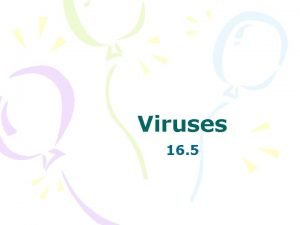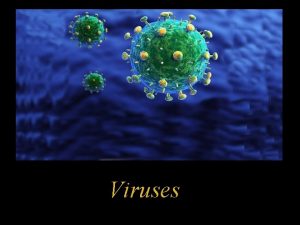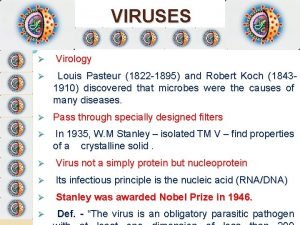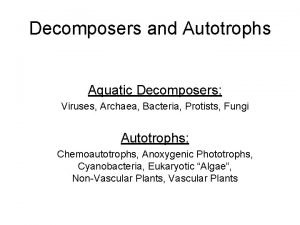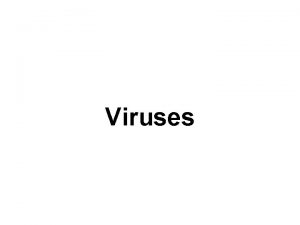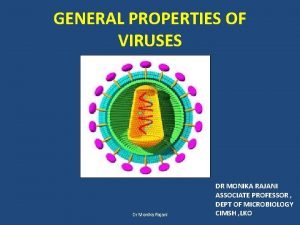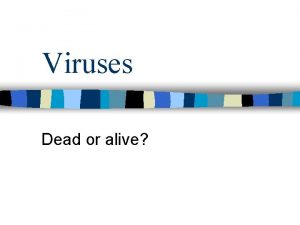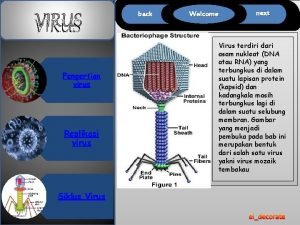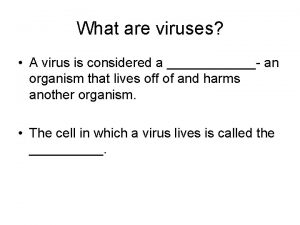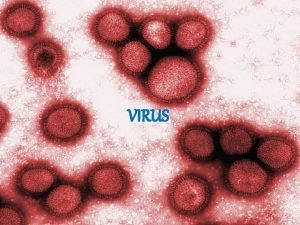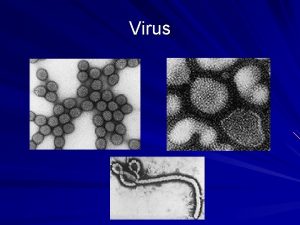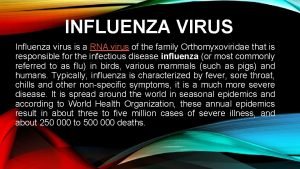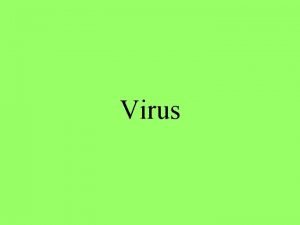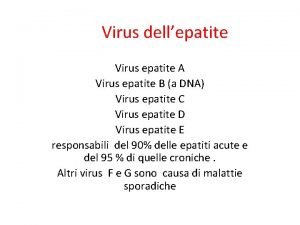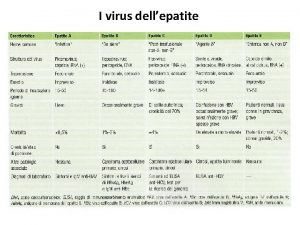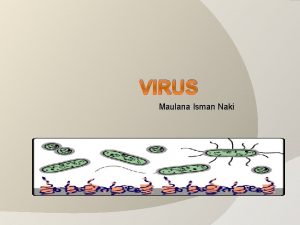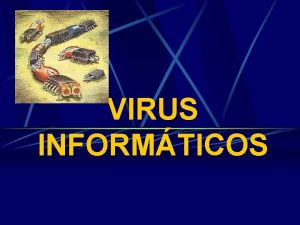Viruses What are viruses A virus is considered





















- Slides: 21

Viruses

What are viruses? A virus is considered a parasite - an organism that lives off of and harms another organism. The cell in which a virus lives is called the host.

What are viruses? They are not living things. Viruses are considered non-living because they do not use energy to grow or to respond to their surroundings. Viruses only do one thing living things do – they reproduce, but they are incapable of reproducing on their own, without a host.

What are viruses? They are very, very small. Much smaller than bacteria. Viruses are so small that they cannot be seen with the type of microscopes found in most high schools. Instead, scientists must use electron microscopes to view viruses. Viruses are much smaller than the cells they infect. See how small some are!

What are viruses? Viruses can infect almost every living thing (all of the kingdoms), but each virus can only infect a few types of cells in only a few specific species.

Naming Viruses are not named like living organisms using binomial nomenclature. Often, a virus is named after the disease it causes. Some viruses are named after the person(s) who discovered them.

Examples of Viruses vary in their shape and size. Below are some pictures of various viruses. Rabies Virus Rod-shaped Virus Ebola Virus

Structure of Viruses All viruses have two basic parts: an outer coat (head) and an inner core. The outer coat provides protection for the virus. The coat is made of proteins, and each virus has a unique protein that makes up its coat. The coat plays an important role in a virus' ability to attach to and infect its host cell. The coat is what determines what type of cells the virus is able to invade.

Structure of Viruses The inner core is made up of a virus' genetic material. It is this genetic material that holds the instructions for making more viruses. The tail fibers assist the virus when it attaches itself to a host cell and inserts its genetic materials into the host cell.

Structure of a Virus

Virus Reproduction

Diseases Caused by Viruses HIV / AIDS Chicken Pox Common Cold Pink Eye Ebola Hepatitis Flu Measles Meningitis Mononucleosis Norwalk Virus Rabies Rotavirus West Nile

Small Pox

What is smallpox? Smallpox is a contagious infection caused by the variola virus. Smallpox can be deadly, so if an outbreak happens, it is vital to stay away from infected people.

What is smallpox? Before there was a vaccine, smallpox used to cause death all around the world. Thanks to widespread use of the vaccine, the last natural case of smallpox occurred in 1977. And in 1980 the World Health Organization (WHO) declared that the spread of smallpox was stopped and that the disease had been wiped out.

What is smallpox? Because there is a slight risk of serious reactions and even death from the smallpox vaccine, routine smallpox immunization ended in the United States in 1972. Smallpox virus is known to exist in labs at the Centers for Disease Control and Prevention (CDC) in the U. S. and at the Institute of Virus Preparations in Siberia, Russia.

Norovirus (Norwalk Virus) Noroviruses are the most common cause of acute gastroenteritis (infection of the stomach and intestines) in the United States. Norovirus illness spreads easily and is often called stomach flu or viral gastroenteritis.

Norovirus (Norwalk Virus) Sources Produce, shellfish, ready-to-eat foods touched by infected food workers (salads, sandwiches, ice, cookies, fruit), or any other foods contaminated with vomit or feces from an infected person Incubation Period 12 -48 hours Symptoms Diarrhea, vomiting, nausea, and stomach pain. Diarrhea tends to be watery and non-bloody. Diarrhea is more common in adults and vomiting is more common in children Duration of Illness 1 -3 days. Among young children, old adults, and hospitalized patients, it can last 4 -6 days.

Treatments Antibiotics don’t work against viral infections. Vaccines help prevent some viral infections.

How do vaccines work? Most vaccines trick the body into thinking it has been infected with a virus. The body releases its own natural defenses to fight off the phony viral infection. The body is then on “alert”. It will recognize and fight off the virus if it really enters the body.

How do vaccines work? Some viruses can mutate or change their appearance. That’s why you need to get a new flu shot every year. This year’s flu virus will not look like last year’s, so your memory cells will not recognize it from last year’s vaccination.
 Mikael ferm
Mikael ferm Https://m..com/watch?v=nqecciuc7jy
Https://m..com/watch?v=nqecciuc7jy /watch?v=dckvspcd8gs
/watch?v=dckvspcd8gs Why are viruses considered nonliving?
Why are viruses considered nonliving? Lytic infection
Lytic infection Cultivation of viruses
Cultivation of viruses General properties of viruses
General properties of viruses Properties of viruses
Properties of viruses Chapter 20 viruses and prokaryotes
Chapter 20 viruses and prokaryotes Blood borne viruses
Blood borne viruses Importance of viruses
Importance of viruses Viruses
Viruses Aquatic decomposers
Aquatic decomposers Molecular biology of the gene chapter 10
Molecular biology of the gene chapter 10 How do viruses differ from living things
How do viruses differ from living things Cmv
Cmv Hepatotropic viruses
Hepatotropic viruses Egg inoculation technique
Egg inoculation technique General properties of viruses
General properties of viruses How active viruses multiply
How active viruses multiply Are viruses dead or alive
Are viruses dead or alive Virus taxonomy
Virus taxonomy




